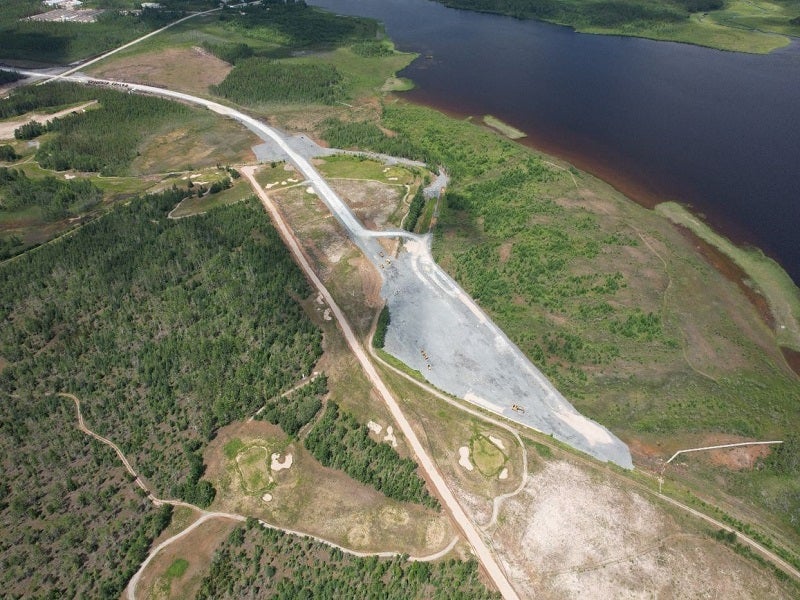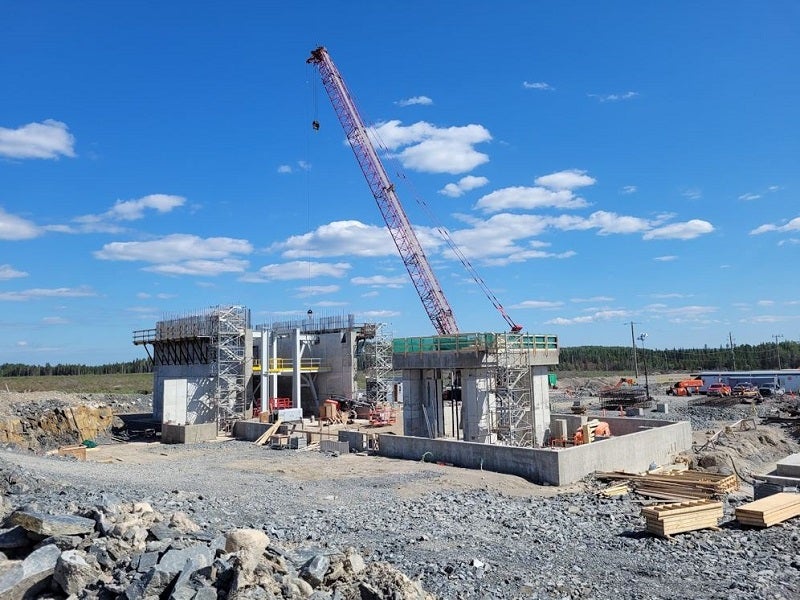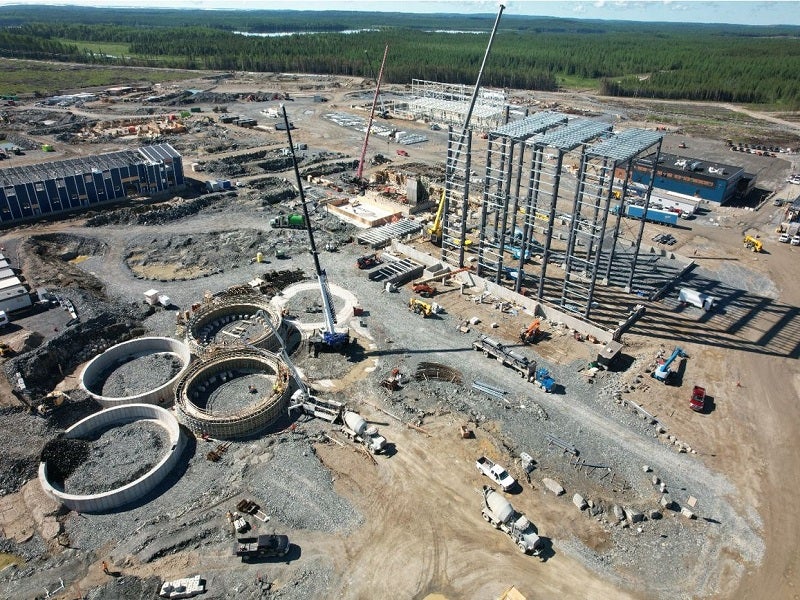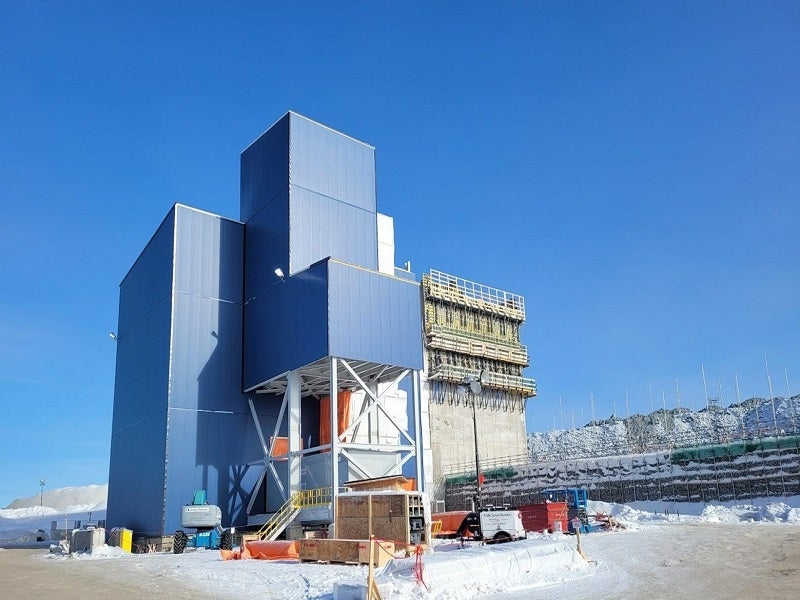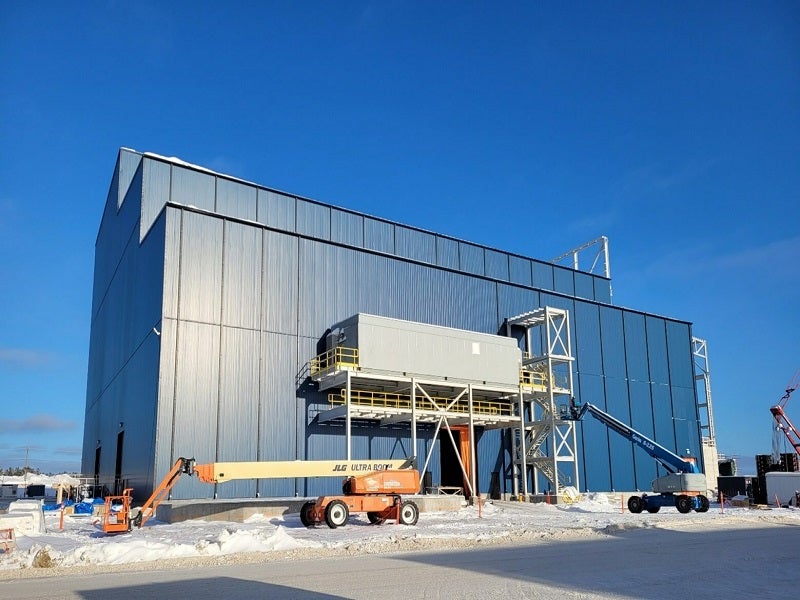The Greenstone gold project in Ontario, Canada, is being developed by Greenstone Gold Mines, a joint venture between Equinox Gold (60%) and Orion Mine Finance (40%).
The technical report for the project was published in December 2020. Full-scale construction of the project commenced in October 2021, while production is scheduled to commence in the first half of 2024.
The initial capex for the project including construction, equipment purchases, and pre-production activities is estimated to be $1.23bn.
The project is expected to produce 400,000oz of gold a year during the first five years of operations. The average annual gold production through the 14-year mine life will be 366,000oz.
Location of the Greenstone gold project
The Greenstone gold project is in the Thunder Bay Mining district of Ontario. The property lies at the intersection of Provincial Highway 584 and Trans-Canada Highway 11. It is located approximately 275km north-east of Thunder Bay and 4km south of Geraldton, Ontario.
Geology and mineralisation of the Greenstone project
The Greenstone project lies in the eastern part of the Beardmore-Geraldton Greenstone Belt, which primarily comprises volcanic and sedimentary rock formations.
The project consists of contiguous mining claims named Hardrock, Brookbank and Viper, with the mine plan mainly focusing on the Hardrock deposit. The Hardrock gold deposit is the outcome of an Archean mesothermal, epigenetic hydrothermal system. Gold was deposited in four different forms of mineralisation in the system within various greenstone lithologies, including greywacke, iron formation, and albite porphyry.
Gold mineralisation in the Hardrock deposit is associated with subvertical structures connected to quartz veins or stringers, minor to semi-massive sulphides connected to replacement zones in the banded-iron formation (BIF), and weak to moderate carbonate alteration and strong sericite alteration.
Reserves of the Greenstone gold project
The total proven and probable reserves of the Greenstone gold project are estimated at 135.3Mt grading 1.27g/t of Au with 5,539koz of contained gold.
Mining of the Greenstone project
The project will be mined using open-pit mining methods. Blasthole drill rigs will be used to drill 10m benches and excavation will be carried out by two 29m³ hydraulic face shovels, one 29m³ hydraulic excavator, and two 30m³ front-end wheel loaders.
Mining will be undertaken in five main phases commencing with a starter pit. The open pit will be 1.8km-long, 1km-wide and 600m-deep. A fleet of 240t class mine trucks will be used to load and transport the mined ore.
Five separate waste dumps will be developed to dispose of leftover rock, four of which will be close to the pit and one farther south.
Processing facility capacities
The processing facility is designed with a capacity of 27,000tpd with a 92% overall availability.
Run-of-mine ore will be transported by mine haulage trucks to the crushing circuit, where it will be reduced to particle sizes of 120mm-160mm in the primary crusher, and 50mm in the secondary crusher for high-pressure grinding rolls (HPGR) and ball mill circuit.
The HPGR circuit will crush and grind the ore to the ideal grind size for the leach and carbon-in-pulp (CIP) circuits. Gravity-recoverable gold is removed using gravity in the grinding circuit to lighten the workload on the leach and CIP circuits.
The gold ore will then go through carbon elution followed by electrowinning and smelting to produce gold dore. The cyanide destruction circuit and tailings disposal receive the undersize from the CIP circuit.
Infrastructure
The Greenstone project is accessible throughout the year by paved roads from Geraldton. Thunder Bay can be reached by Trans-Canada Highway 11. The city additionally offers rail, national highway, port, and international airport connections for the project.
Power required for the project will be generated using a 65MW natural gas-fired power plant. A new tap-off from the Canadian Mainline pipeline operated by energy company TransCanada and a new distribution pipeline will be built from the Geraldton metering station to the project site to supply the natural gas needed for the power plant.
The project will use potable water supplied by the Geraldton municipality. Surface runoff water and underground workings water will be used to supply make-up water.
A temporary camp will be developed with an average occupancy of 400 people a few kilometres away from the mine site and near Geraldton.
Contractors involved
Canada-based mining consultancy firm G Mining Services prepared the technical report for the project.
Ausenco Engineering, an engineering, construction and project management company; John Wood Group, an engineering and consulting firm; Soutex, a consulting firm specialising in ore processing; and SLR, an environmental consultancy, were also involved in preparing the technical report.
Other companies involved in preparing the technical report were Stantec Consulting, a professional services company; FNX Innov, an engineering firm; and TBT Engineering, a civil, mechanical, and electrical engineering consulting firm.

